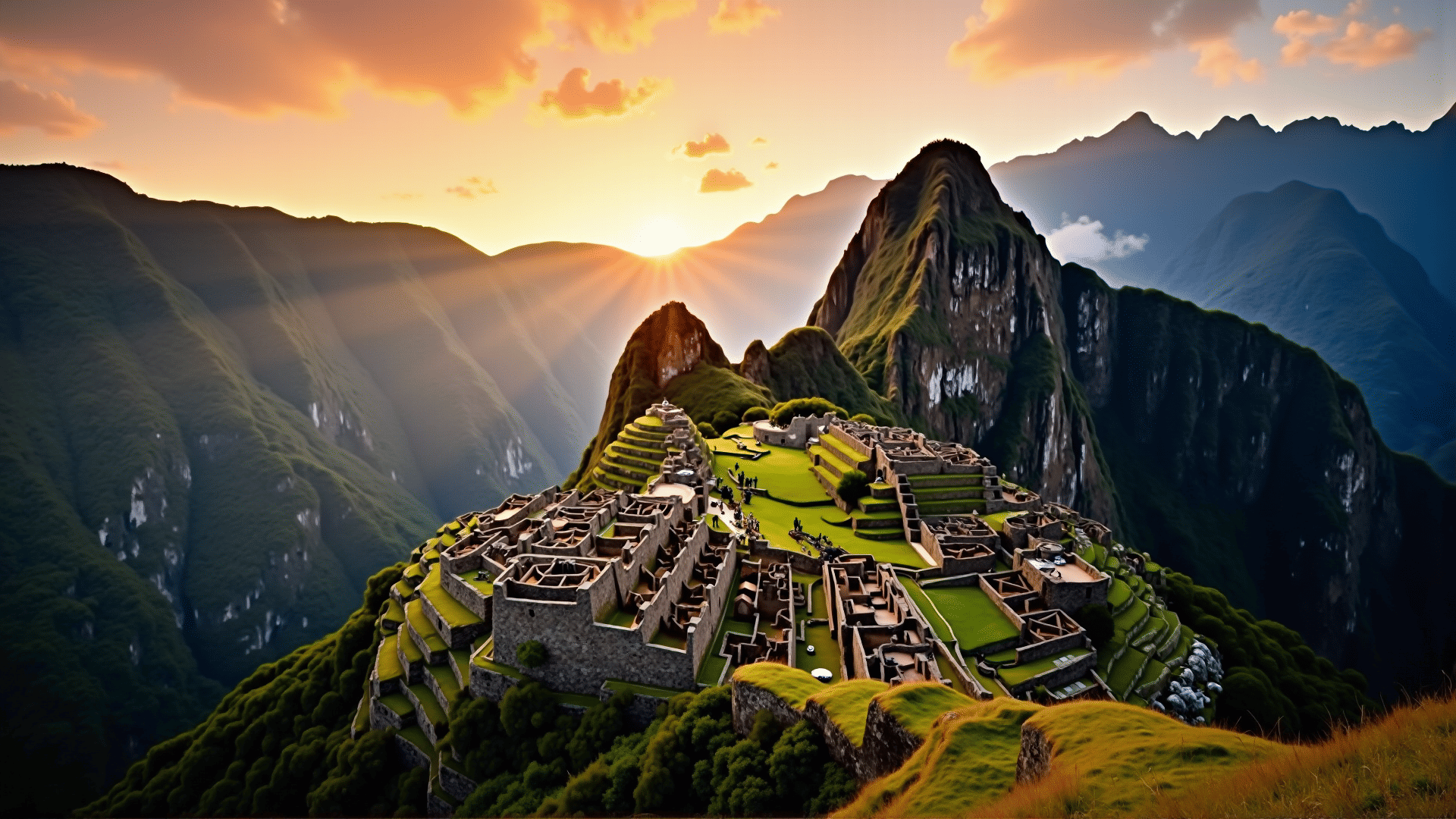Nestled high in the Andes Mountains, shrouded in mist and mystery, the ancient ruins of Machu Picchu beckon adventurers and historians alike to step back in time and walk the pathways of the Inca Empire. Recognized as one of the most iconic archaeological sites in the world, this UNESCO World Heritage site draws hundreds of thousands of travelers who are eager to uncover its secrets.
Machu Picchu, often referred to as the "Lost City of the Incas," is perched above the Urubamba River valley at 2,430 meters (7,970 feet) above sea level. It wasn't until 1911 that the site was brought to international attention by American historian and explorer Hiram Bingham. Since then, it has captivated the imagination with its majestic architecture and stunning natural setting.
Arriving at Machu Picchu is an experience unto itself; most visitors travel the Inca Trail or take the train from Cusco, winding through the Sacred Valley surrounded by towering peaks and lush landscapes. Approaching the site, one can't help but be awestruck by the way the ruins seem to blend seamlessly with the rugged terrain, as if the mountains themselves have cradled and preserved this treasure through the centuries.
Expert guides are essential for unraveling the complex history and architectural brilliance of Machu Picchu. Once a thriving citadel built by the Incas in the 15th century, it is believed to have served as an estate for the Inca emperor Pachacuti. Its exact purpose, however, remains shrouded in mystery, with scholars suggesting it may have been a religious site, a royal retreat, or even both. As guides walk travelers through its terraces, temples, and plazas, they illuminate the intricacies of Inca culture and engineering, demonstrating how the Incas ingeniously harnessed their environment.
The site is constructed in typical Inca style with polished dry-stone walls, expertly cut and fitted to withstand earthquakes. The Temple of the Sun, with its perfectly carved stones, is one of the most significant structures, thought to be used for astronomical observations and ceremonies. Intihuatana, a carved rock pillar, served as a sun dial and remains central to understanding the Inca's profound connection with celestial movements.
Among the various sections of Machu Picchu, the agricultural terraces are a testament to Inca ingenuity. These terraces not only made farming on steep mountain slopes possible but also helped with drainage and prevented landslides. Walking along these terraces, visitors gain insight into the sustainable practices of a civilization that thrived in harmony with nature.
The ultimate highlight of any visit is reaching the Sun Gate (Inti Punku), the original entrance to Machu Picchu for those hiking the Inca Trail. From here, witnesses are treated to a breathtaking panoramic view of the ruins against a backdrop of mist-covered mountains, a reward for the trek and a moment to savor the beauty crafted by both nature and human hands.
While much is known about Machu Picchu, its swift abandonment and the absence of written records continue to fuel intrigue and speculation. Theories abound regarding the city's sudden desertion following the Spanish conquest, leaving modern-day explorers to ponder what life was truly like on these hallowed grounds.
Machu Picchu is more than just a site of historical importance; it is a living testament to the resilience and sophistication of the Inca Empire. As travelers gaze upon this perch in the clouds, it's clear that Machu Picchu holds not only the remnants of an ancient past but also the promise of endless mysteries waiting to be explored, inviting us to ponder, reflect, and escape into a world that once flourished high above the clouds.
